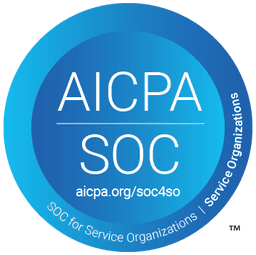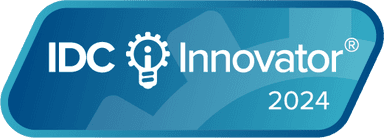Aug 12, 2025
What is consumption‑based billing? A guide for SaaS finance teams
Learn how SaaS Finance teams can better manage consumption-based billing to increase automation, reduce errors, reclaim revenue leakage, and reduce compliance and audit risk.
What is Consumption-Based Billing? A Guide for SaaS Finance Teams
In the past decade, the SaaS landscape has evolved rapidly—but billing infrastructure and processes haven’t always kept pace. As companies shift from simple recurring subscriptions to more dynamic, usage-based pricing, Finance and Billing Operations teams are under pressure to adapt.
Managing usage-based billing demands a rethinking of the quote-to-cash process, and the adoption of modern, metered billing software that can handle automation, compliance, and scale. In this post, we’ll explore what consumption billing is, why it’s on the rise, and how Finance teams can adapt to thrive in this new reality.
What Is Consumption-Based Billing?
At its core, consumption-based billing (also known as usage-based billing) charges customers based on their actual use of a product or service. Rather than paying a flat fee per user or per month, customers pay based on their consumption—whether that’s API calls, GB of data stored, minutes of video processed, AI tokens generated, etc.
Unlike traditional subscription models that offer predictability but limited flexibility, consumption-based billing more closely links the amount paid with the value delivered. It’s inherently more transparent for customers, and often more scalable for providers.
[H2] Why SaaS Companies Are Embracing Consumption-Based Billing
SaaS businesses are increasingly adopting usage-based billing as an effective go-to-market strategy. Why?
- Stronger alignment with customer value. When billing matches usage, customers feel they’re paying fairly—and vendors capture more revenue as adoption deepens.
- Lower adoption friction. Customers can start small and expand naturally, removing blockers in the initial sales process.
- Built-in expansion revenue. As usage increases, so does revenue—no need to constantly upsell.
- Greater resilience. In a downturn, usage may decline, but the customer doesn’t churn. Flexibility keeps relationships intact.
For many companies, consumption pricing is tied to major strategic shifts: new product launches, PLG motions, or a push into cloud marketplaces—all of which naturally align with usage-based models.
The Hidden Complexity Behind Consumption-Based Billing
From the outside, it may sound simple: measure usage, apply pricing, send an invoice.
But anyone who’s tried to manage this in Excel knows otherwise.
There are a new set of ‘jobs to be done’:
- Usage data ingestion: Collecting raw customer usage data, sometimes from multiple systems.
- Mediation and enrichment: Normalizing, aggregating, validating, and storing that data.
- Rating: Applying the right pricing logic—often multi-dimensional, tiered, or commitment-based.
- Ledger management: Tracking prepayments, drawdowns, and balances across periods.
- Revenue recognition: Aligning usage data to GAAP-compliant accounting.
Why the Finance Team Struggles with Consumption-Based Billing
Let’s be blunt: traditional SaaS billing systems were built for subscriptions, not consumption.
So Finance teams are often forced into error-prone, labor-intensive workflows to cover the gaps:
- Downloading customer usage data from Engineering.
- Matching it manually with pricing in spreadsheets.
- Calculating bills, exporting results into invoicing tools.
- Maintaining separate trackers for commitments, thresholds, and balances.
- Scrambling at month-end to close the books and recognize revenue.
It’s no surprise that under this approach
- Financial close can take weeks.
- Audit risk increases.
- Revenue leakage is endemic.
- Custom enterprise pricing becomes operationally brittle.
- Sales and Success don’t have access to timely revenue insights.
What Finance Needs From Modern SaaS Billing Tools
To manage usage-based billing effectively, Finance needs more than invoicing software. They need metered billing software that provides end-to-end automation, transparency, and flexibility across the quote to cash lifecycle:
- Automated, real-time metering and rating – to price usage as it happens.
- Highly configurable pricing engines – to support even the most complex pricing rules.
- CRM and ERP integrations – seamless flow with Salesforce, NetSuite, and CPQ tools.
- Revenue recognition support – clean, auditable data for your accounting team.
- Self-service control – Finance can run billing and update pricing without bothering Engineering.
- Usage and spend visibility – so teams across the business can make better decisions.
The right platform will not only automate billing, but also deliver continuous revenue insights, unlock pricing agility, and enable teams to test new monetization models—without risking billing integrity.
When To Consider Upgrading Your Systems
Although those manual, spreadsheet-based workflows are painful, they’re still probably the least worst option when you’re a small and/or simple business.
But as your business matures and becomes more complex, it’s time to invest in new systems. Here are some signals that you’ve reached that point:
- You’ve hit $50M+ in ARR and need to scale SKUs, regions, and contracts.
- You’re entering cloud marketplaces or adopting PLG.
- You’ve hired a CFO with prior usage-based pricing experience.
- Billing is becoming an acute pain point for Finance and Ops, or billing systems are perceived as a blocker for new product launches, or custom enterprise deals.
- You have had a difficult audit or funding round where concerns were raised about the strength of your control environment.
- You are preparing for an IPO or major transaction, that will require that you pass a ‘Quality of Earnings’ review
- You are doing M&A and need to consolidate systems.
Choosing the Right Metered Billing Software
When evaluating solutions, look beyond surface features. Ask:
- Can the system automate billing from raw usage data to invoice?
- Does it support proration, drawdowns, and multi-attribute pricing?
- Can Finance configure pricing without writing code?
- Are bills traceable and auditable—down to each usage event?
- Can it integrate seamlessly with Salesforce, NetSuite, and CPQ tools?
- Does it provide real-time revenue insights and visibility across teams?
The ideal solution makes your billing workflows flexible and scalable. You want to focus on strategic finance, not spreadsheet firefighting.
Final Thoughts: The Future of Finance Is Usage-Aware
As more SaaS companies embrace consumption-based billing, Finance must keep pace. That means leaving behind brittle manual workflows and adopting systems that support automation, accuracy, and insight.
With the right tools, Finance teams can:
- Automate billing and eliminate errors
- Reclaim revenue leakage
- Reduce audit and compliance risk
- Deliver real-time revenue insights to the business
m3ter is built for exactly this. Our platform empowers Finance and Ops teams to own and operate consumption-based billing—little/no engineering support required.
Ready to modernize your billing? Book a demo and see how m3ter simplifies consumption-based billing for Finance teams.
FAQs
What is consumption-based billing?
It’s a pricing model where customers are charged based on their actual usage of a service, not a flat monthly fee. It enables more flexible, scalable billing tied to customer value.
Why is usage-based billing becoming more popular in SaaS?
Because it aligns spend with usage, supports product-led growth, enables easy account expansion, and improves resilience in tough economic climates.
What challenges does usage-based billing create for Finance?
It introduces complex contracts, high data volumes, and billing risks that legacy systems can’t manage, and manual processes are a bad way of covering the gaps.
How can Finance teams adapt?
By adopting automated, usage-aware billing platforms that integrate with quote-to-cash systems and provide revenue insights in real time.
When should a SaaS company consider moving to usage-aware billing platform?
Typically around $50M ARR, when launching usage-heavy products, or when billing becomes an acute pain point for Finance teams.
You might also like…
Subscribe to Counting Tokens
Actionable insights on AI revenue, billing, and finance.
Ready to upgrade your monetization stack?
See a demo, get answers to your questions, and learn our best practices.
Schedule a demo


